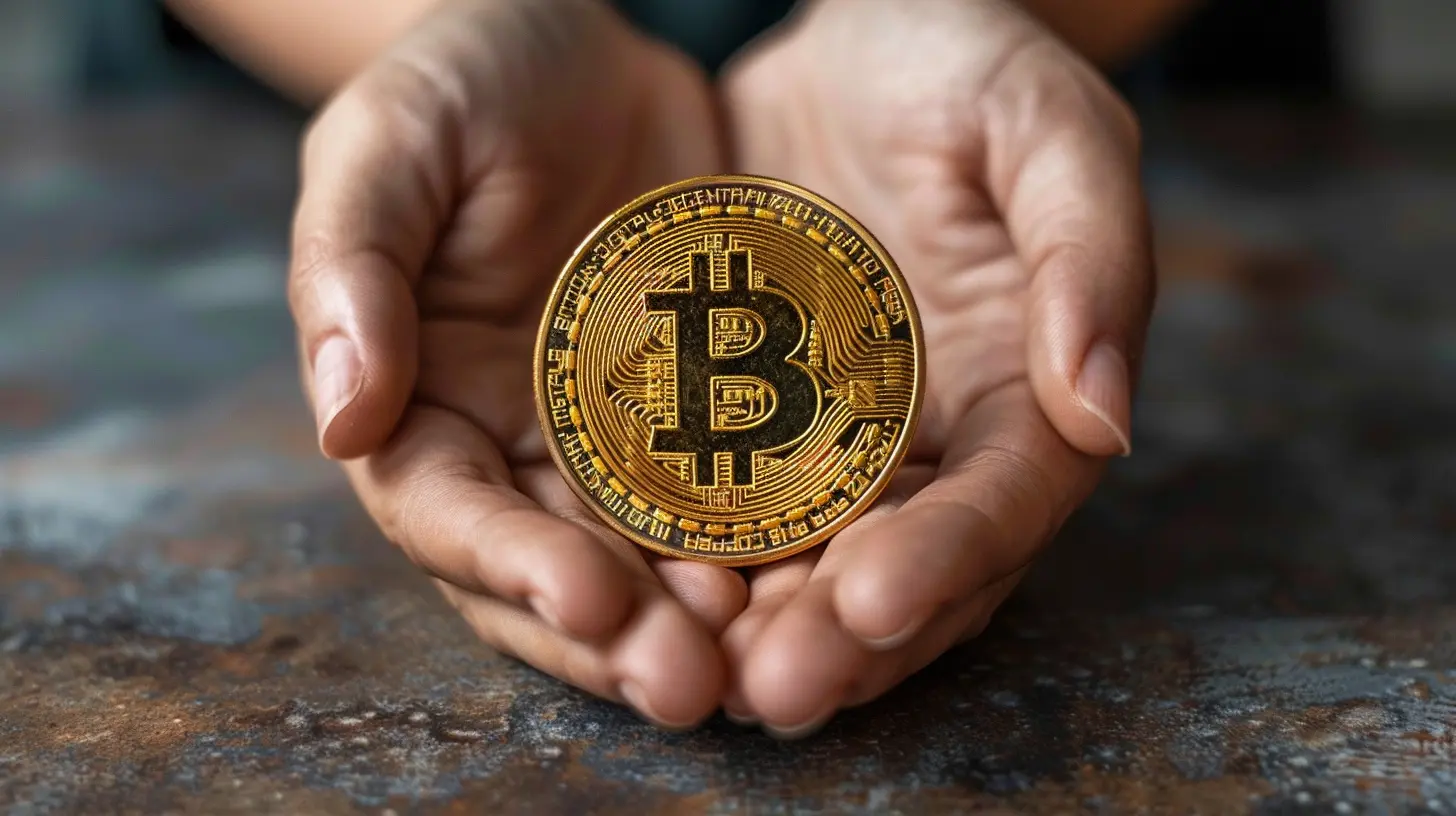The Future of Cryptocurrency: Decentralized Finance and Beyond
5 July 2025
Cryptocurrency has come a long way since Bitcoin first made its mark in 2009. Back then, most people saw it as a niche technology, something only the tech-savvy and crypto enthusiasts cared about. Fast forward to today, and things look very different. Cryptocurrencies are now a hot topic in mainstream finance, and their impact is undeniable. But here's the kicker: It's not just Bitcoin anymore. There’s a whole ecosystem sprouting up around the concept of decentralized finance (DeFi), and it’s poised to reshape the world of finance as we know it.
So, what does the future of cryptocurrency look like? And how does decentralized finance play into it? In this article, we’ll dive deep into the exciting developments in the world of crypto, explore the role of DeFi, and look at what's on the horizon. Buckle up because things are about to get interesting!

What is Decentralized Finance (DeFi)?
Before we jump too far ahead, let’s take a moment to get everyone on the same page. In simple terms, Decentralized Finance (DeFi) refers to financial services and products built on blockchain technology. Unlike traditional financial systems that rely on centralized intermediaries like banks and brokers, DeFi operates in a peer-to-peer (P2P) fashion using smart contracts. This eliminates the need for middlemen, reducing costs and increasing speed and transparency.The Core Features of DeFi
1. Decentralization – No central authority holds control over the system. Instead, it’s governed by code and algorithms.2. Smart Contracts – Self-executing contracts with the terms of the agreement directly written into lines of code.
3. Transparency – All transactions are recorded on a public ledger (thanks to blockchain), making them fully auditable.
4. Access to Everyone – DeFi is open to anyone with an internet connection, unlike traditional finance, which can be limited by geography, documentation, or credit scores.
Sounds revolutionary, right? Well, it is. But we're just scratching the surface here. DeFi is opening up possibilities that were unimaginable just a few years ago.

The Rise of DeFi: Why It's a Game-Changer
If you’ve been paying attention, you’ve probably heard the term “DeFi” being tossed around quite a bit. And for good reason. The DeFi movement exploded in 2020, with billions of dollars flowing into decentralized applications (dApps) at an unprecedented rate. But why is DeFi such a big deal?1. Financial Inclusion: Banking the Unbanked
Believe it or not, there are over 1.7 billion people around the world who don’t have access to traditional banking services. They can’t get a loan, save money in a bank, or even make simple financial transactions. DeFi has the potential to drastically change that. With just a smartphone and an internet connection, people can now access a suite of financial tools that were previously out of reach.DeFi doesn’t care if you live in New York or a remote village in India; you have the same access to financial services as anyone else.
2. Cutting Out the Middleman
Let’s be real: Banks and other financial institutions have been making a killing by acting as middlemen. They charge fees for just about everything – moving your money, lending you money, letting you store your money. With DeFi, all of that goes away. Smart contracts handle transactions automatically, and they do so without charging hefty fees.Think of it like this: Instead of paying a toll every time you drive on a road, DeFi gives you free access to highways that work more efficiently than the ones you're used to.
3. Permissionless and Borderless
Traditional finance is heavily regulated and often restricted by borders. Try sending money across countries using your bank, and you’ll quickly run into high fees, long wait times, and endless paperwork. With DeFi, there are no borders. You can send money halfway across the world as easily as you would send an email. And the best part? You don’t need permission from any authority to do it.4. Yield Farming and Staking
Traditional savings accounts offer laughable interest rates these days – sometimes even below 1%. Enter DeFi, where you can earn significantly higher returns through yield farming and staking. Yield farming allows you to lend your crypto assets in exchange for interest, while staking earns you rewards for helping secure a network by holding onto a specific cryptocurrency. It’s like earning rent on your property, except the property is your digital assets.
The Future of DeFi: What’s Next?
DeFi is still in its infancy, but the potential is massive. As the technology matures, we can expect to see more innovation and adoption in the coming years. Let’s take a look at some of the trends that are likely to shape the future of decentralized finance.1. Cross-Chain Interoperability
One of the biggest limitations of DeFi right now is that most platforms operate within their own isolated ecosystems. For example, Ethereum-based DeFi apps don’t easily interact with those built on Binance Smart Chain or Solana. However, this is changing with the development of cross-chain solutions that enable different blockchains to communicate with one another.Imagine a world where you can seamlessly move assets between Ethereum, Polkadot, and Binance Smart Chain without needing to jump through hoops. That’s the future we’re headed toward.
2. Regulation and Compliance
Let’s face it: Governments and regulators are starting to take DeFi seriously. And while regulation can be seen as a double-edged sword, it’s also inevitable. The challenge will be to strike a balance between fostering innovation and protecting consumers.One thing’s for sure: The days of DeFi flying under the radar are over. But that’s not necessarily a bad thing. Clear regulations could help legitimize DeFi in the eyes of institutional investors, paving the way for even greater adoption.
3. Real-World Asset Tokenization
Currently, most DeFi applications revolve around cryptocurrencies and digital assets. But what if we could extend this concept to real-world assets like real estate, stocks, or even art? That’s where asset tokenization comes in.Tokenizing real-world assets would allow them to be traded, collateralized, or leased on blockchain platforms, opening up new possibilities for liquidity and investment opportunities. Imagine buying a fraction of a house or a piece of fine art with just a few clicks.
4. Scalability Solutions
Ethereum – the backbone of most DeFi projects – has faced major scalability issues, leading to high gas fees and slow transaction times. However, new solutions like Ethereum 2.0, layer-2 scaling solutions (e.g., Optimism, Arbitrum), and alternative blockchains (e.g., Solana, Avalanche) are tackling these issues head-on. As these technologies become more robust, DeFi will be able to scale to accommodate millions (or even billions) of users without sacrificing speed or cost.5. Decentralized Governance
In traditional finance, decisions are made by a handful of executives behind closed doors. In DeFi, decisions are made by the community. Many DeFi platforms have embraced decentralized governance, where token holders have the power to vote on key decisions that shape the future of the platform.This democratic approach puts power back into the hands of users rather than centralized authorities. And as DeFi matures, we’ll likely see even more projects adopting this community-first model.

Beyond DeFi: The Broader Future of Cryptocurrency
While DeFi is undoubtedly one of the most exciting aspects of the crypto space, there’s a lot more happening in the broader world of cryptocurrency. Let’s take a quick look at some other key trends that are shaping the future of crypto.1. Central Bank Digital Currencies (CBDCs)
Governments around the world are exploring the idea of launching their own digital currencies, known as Central Bank Digital Currencies (CBDCs). Unlike decentralized cryptocurrencies like Bitcoin, CBDCs would be issued and controlled by central banks. Countries like China and Sweden are already conducting trials, and it’s likely that more nations will follow suit.CBDCs could offer faster, more efficient payment systems, but they also raise concerns about privacy and control. Will governments use CBDCs to monitor and track every transaction? Only time will tell.
2. Institutional Adoption
For years, institutional investors steered clear of cryptocurrencies due to their volatility and regulatory uncertainty. But that’s changing. Major financial players like Tesla, Square, and MicroStrategy have added Bitcoin to their balance sheets, while investment firms like Grayscale and Fidelity are offering crypto investment products to their clients.As more institutions embrace crypto, we can expect increased stability, liquidity, and legitimacy in the market.
3. NFTs and the Creator Economy
Non-Fungible Tokens (NFTs) have taken the art and entertainment world by storm, allowing creators to tokenize their work and sell it directly to fans. NFTs are just the beginning of what’s possible in the creator economy. Over time, we’ll likely see more use cases for NFTs, from virtual real estate to digital identity verification.Conclusion: The Crypto Revolution is Just Getting Started
The future of cryptocurrency is bright, and decentralized finance is at the forefront of this revolution. While there are still challenges to overcome – from regulation to scalability – the potential benefits are enormous. DeFi has the power to democratize finance, offering access to financial services to anyone with an internet connection.But it doesn’t stop there. As we look beyond DeFi, we see a world where cryptocurrencies are integrated into everyday life, from government-issued digital currencies to tokenized assets and beyond. The crypto space is evolving rapidly, and the ride is far from over.
So, what’s next? Only time will tell, but one thing’s for sure: The future of cryptocurrency is going to be one wild ride.
all images in this post were generated using AI tools
Category:
Emerging TechnologiesAuthor:

Kira Sanders
Discussion
rate this article
2 comments
Sara Green
Decentralized finance: where your wallet is lighter, but the jargon is heavier!
October 6, 2025 at 12:34 PM

Kira Sanders
Thanks for your comment! It's true—while DeFi simplifies finance, the jargon can be daunting. We're working to demystify it for everyone!
Phaedra Cox
Thank you for this insightful article on the future of cryptocurrency! Your exploration of decentralized finance and its potential impact is both thought-provoking and timely. It’s exciting to consider how these innovations could reshape our financial landscape. I look forward to seeing how this space evolves in the coming years!
July 12, 2025 at 11:07 AM

Kira Sanders
Thank you for your kind words! I'm glad you found the article insightful, and I share your excitement about the future of decentralized finance.


